Shigeyuki Sakazawa
Digital Watermarking for Deep Neural Networks
Feb 06, 2018
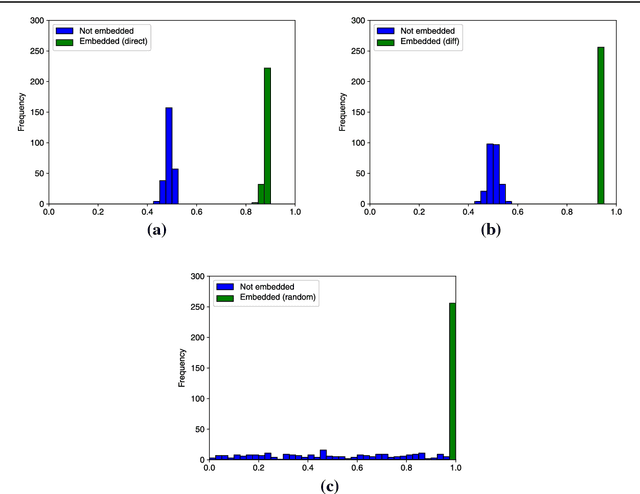
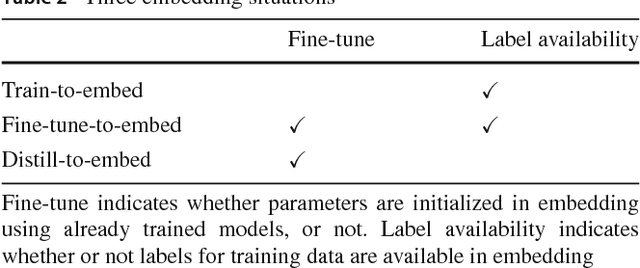
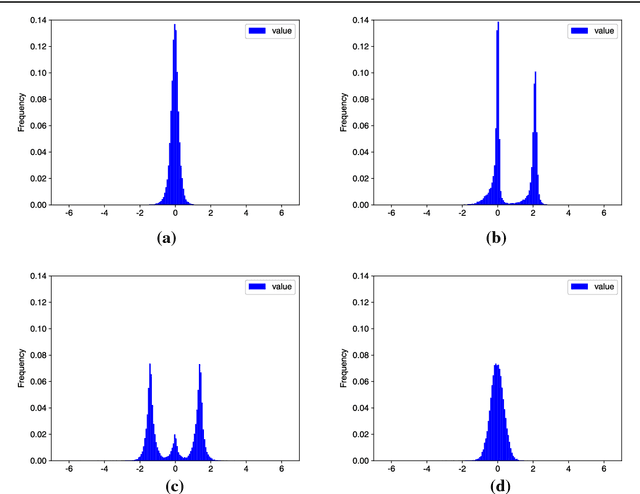
Abstract:Although deep neural networks have made tremendous progress in the area of multimedia representation, training neural models requires a large amount of data and time. It is well-known that utilizing trained models as initial weights often achieves lower training error than neural networks that are not pre-trained. A fine-tuning step helps to reduce both the computational cost and improve performance. Therefore, sharing trained models has been very important for the rapid progress of research and development. In addition, trained models could be important assets for the owner(s) who trained them, hence we regard trained models as intellectual property. In this paper, we propose a digital watermarking technology for ownership authorization of deep neural networks. First, we formulate a new problem: embedding watermarks into deep neural networks. We also define requirements, embedding situations, and attack types on watermarking in deep neural networks. Second, we propose a general framework for embedding a watermark in model parameters, using a parameter regularizer. Our approach does not impair the performance of networks into which a watermark is placed because the watermark is embedded while training the host network. Finally, we perform comprehensive experiments to reveal the potential of watermarking deep neural networks as the basis of this new research effort. We show that our framework can embed a watermark during the training of a deep neural network from scratch, and during fine-tuning and distilling, without impairing its performance. The embedded watermark does not disappear even after fine-tuning or parameter pruning; the watermark remains complete even after 65% of parameters are pruned.
Embedding Watermarks into Deep Neural Networks
Apr 20, 2017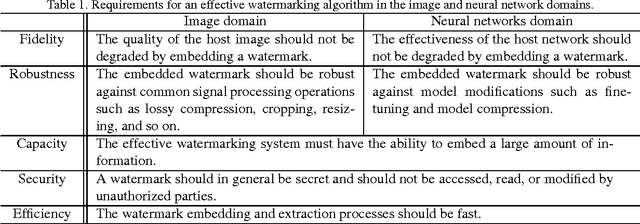
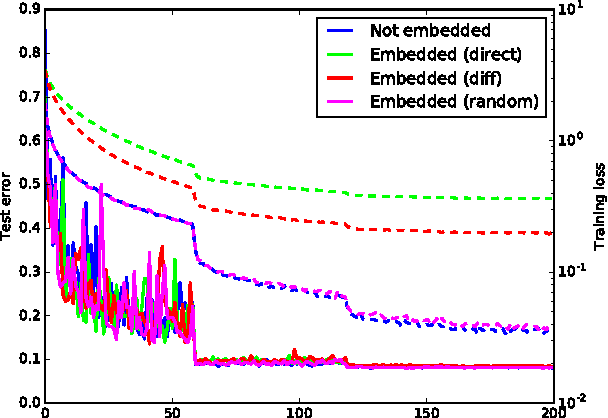


Abstract:Deep neural networks have recently achieved significant progress. Sharing trained models of these deep neural networks is very important in the rapid progress of researching or developing deep neural network systems. At the same time, it is necessary to protect the rights of shared trained models. To this end, we propose to use a digital watermarking technology to protect intellectual property or detect intellectual property infringement of trained models. Firstly, we formulate a new problem: embedding watermarks into deep neural networks. We also define requirements, embedding situations, and attack types for watermarking to deep neural networks. Secondly, we propose a general framework to embed a watermark into model parameters using a parameter regularizer. Our approach does not hurt the performance of networks into which a watermark is embedded. Finally, we perform comprehensive experiments to reveal the potential of watermarking to deep neural networks as a basis of this new problem. We show that our framework can embed a watermark in the situations of training a network from scratch, fine-tuning, and distilling without hurting the performance of a deep neural network. The embedded watermark does not disappear even after fine-tuning or parameter pruning; the watermark completely remains even after removing 65% of parameters were pruned. The implementation of this research is: https://github.com/yu4u/dnn-watermark
Adaptive Substring Extraction and Modified Local NBNN Scoring for Binary Feature-based Local Mobile Visual Search without False Positives
Oct 20, 2016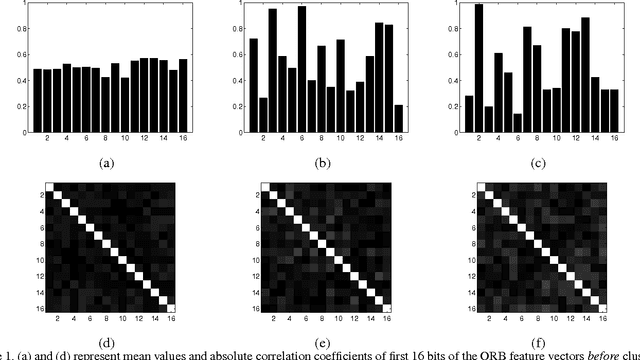

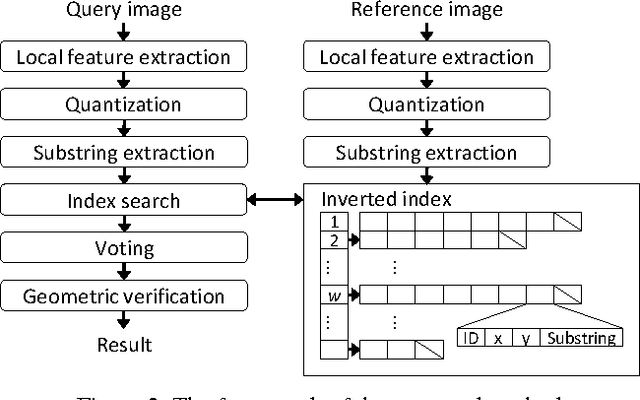

Abstract:In this paper, we propose a stand-alone mobile visual search system based on binary features and the bag-of-visual words framework. The contribution of this study is three-fold: (1) We propose an adaptive substring extraction method that adaptively extracts informative bits from the original binary vector and stores them in the inverted index. These substrings are used to refine visual word-based matching. (2) A modified local NBNN scoring method is proposed in the context of image retrieval, which considers the density of binary features in scoring each feature matching. (3) In order to suppress false positives, we introduce a convexity check step that imposes a convexity constraint on the configuration of a transformed reference image. The proposed system improves retrieval accuracy by 11% compared with a conventional method without increasing the database size. Furthermore, our system with the convexity check does not lead to false positive results.
Image Retrieval with Fisher Vectors of Binary Features
Sep 27, 2016
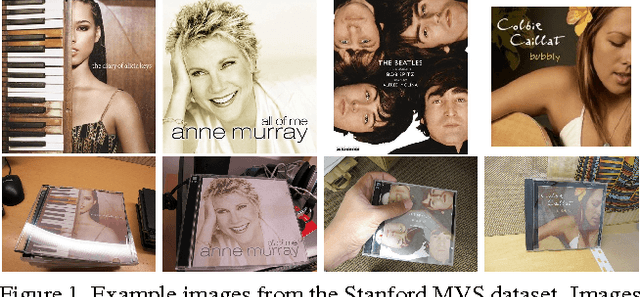

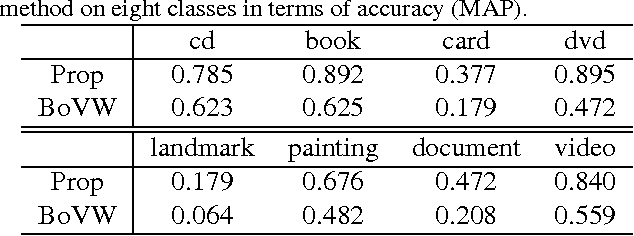
Abstract:Recently, the Fisher vector representation of local features has attracted much attention because of its effectiveness in both image classification and image retrieval. Another trend in the area of image retrieval is the use of binary features such as ORB, FREAK, and BRISK. Considering the significant performance improvement for accuracy in both image classification and retrieval by the Fisher vector of continuous feature descriptors, if the Fisher vector were also to be applied to binary features, we would receive similar benefits in binary feature based image retrieval and classification. In this paper, we derive the closed-form approximation of the Fisher vector of binary features modeled by the Bernoulli mixture model. We also propose accelerating the Fisher vector by using the approximate value of posterior probability. Experiments show that the Fisher vector representation significantly improves the accuracy of image retrieval compared with a bag of binary words approach.
 Add to Chrome
Add to Chrome Add to Firefox
Add to Firefox Add to Edge
Add to Edge